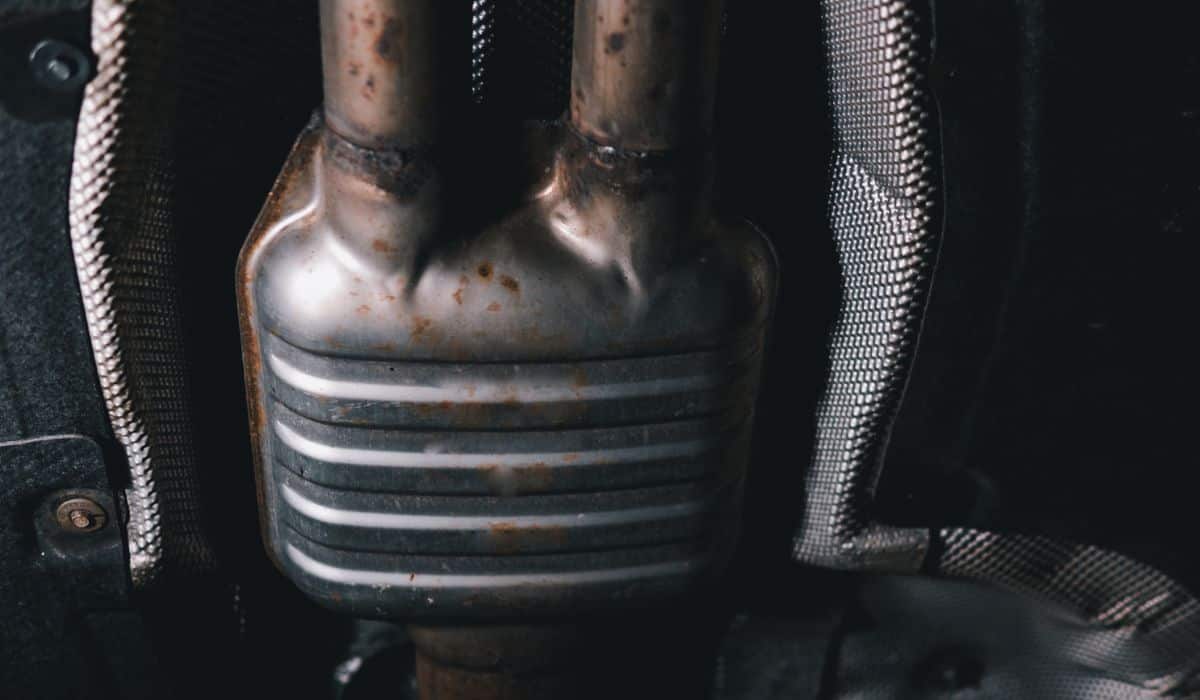Size Matters: How the Size of Your Catalytic Converter Affects Your Car

A catalytic converter is a device that is installed in the exhaust system of a vehicle in order to reduce the emissions of harmful pollutants. It uses a catalyst, usually made of platinum, palladium, or rhodium, to convert pollutants into less harmful compounds. It is important, however, to have the right size of catalytic converter for your car.
A catalytic converter can vary in length and width, depending on the make and model of the car it was installed in. However, they’re usually fairly compact. It is possible to have the wrong size for your car, so you should check that it’s appropriate for the vehicle before installing a new one.
Let’s take a closer look at how the size of a catalytic converter can affect your car, as well as where to find it and what else you should look for.
Where is the Catalytic Converter on a Car?
The catalytic converter is located in the exhaust system, between the exhaust manifold and the muffler. On most vehicles, it’s under the car, near the middle or rear.
Some cars may have more than one catalytic converter. In some special cases, it might be found close to the engine.
The location may vary depending on the make and model of the vehicle so if you’re unsure, it’s best to look it up for your specific car.
How Big is a Catalytic Converter?
The size and weight of a catalytic converter can vary depending on the make and model of the car.
In general, they’re compact units that are cylindrical in shape and measure between 4 inches to 8 inches in diameter and around 10 inches to 14 inches in length.
This variance makes it hard to say exactly how big a catalytic converter will be without knowing the make or model of the vehicle, especially as catalytic converters for heavy-duty vehicles and industrial equipment can be much larger.
Does the Size of Your Catalytic Converter Affect Your Car’s Performance?
Yes, the size of the catalytic converter can affect the car’s performance, but it’s not the only factor that does.
A larger catalytic converter can reduce exhaust flow, which can decrease horsepower and torque.
However, a larger catalytic converter also might be more efficient at reducing emissions, which can be more environmentally friendly.
Catalytic converter size is often determined by the manufacturer based on emissions regulations, meaning it’s often not up to the vehicle owner to change this, and attempting to install the wrong size may not work or can cause problems.
Can a Catalytic Converter Be Too Small for an Engine?
Yes, a catalytic converter can be too small for an engine.
If the converter is too small, it might be unable to properly process the exhaust emissions produced by the engine, leading to increased emissions and potentially damaging the converter itself.
It’s important to use the correct size converter for the engine to ensure proper function and emissions compliance.
How to Choose the Right Catalytic Converter for Your Car
When choosing a catalytic converter for your car, it’s important to consider the following.
Compatibility
Make sure the converter you choose is compatible with your vehicle.
If you’re not sure, you can consult the vehicle’s manual or contact the manufacturer or a dealership, and they should be able to advise you of the catalytic converter you need. It can even be illegal to install the wrong one.
Type of Converter

There are two main types of catalytic converters: direct-fit converters, which are designed to fit specific vehicle makes and models, and universal converters, which can be adapted to fit a wide range of vehicles.
It’s usually better to go with the direct-fit converter, if you can.
Federal and State Emissions Standards
Make sure the converter you choose meets the emissions standards required by your state and the federal government.
States vary in their laws and there can be serious consequences for getting this wrong.
Brand
Consider the reputation and quality of the brand of converter you’re considering.
You can do this by looking up customer reviews and checking that the brand has a good reputation behind it.
This is too important to get wrong, so make sure to research the company beforehand to avoid receiving a bad catalytic converter.
It’s also important to note that it’s illegal to remove or tamper with a catalytic converter, unless a certified mechanic does it for repair or replacement.
Overall, a catalytic converter’s size definitely affects your car, and it’s important to get the right fit. The sizes vary based on the make and model of the vehicle.
There are also things to consider other than the size such as the type of converter, brand, federal and state emissions standards, and, perhaps most importantly, compatibility.
More Catalytic Converter Articles
- How the Size of Your Catalytic Converter Affects Your Car
- Does A New Catalytic Converter Need A Break-In Period?
- Can a Bad Catalytic Converter Cause a Car to Run Rich?
- Is Catalytic Converter Theft Covered by Geico Insurance?
- How Much Is A Catalytic Converter Worth?
- Why Can’t a Junk Yard Sell Catalytic Converters?
- Can Oil Damage a Catalytic Converter?
- Can You Clean A Catalytic Converter With Brake Cleaner?
